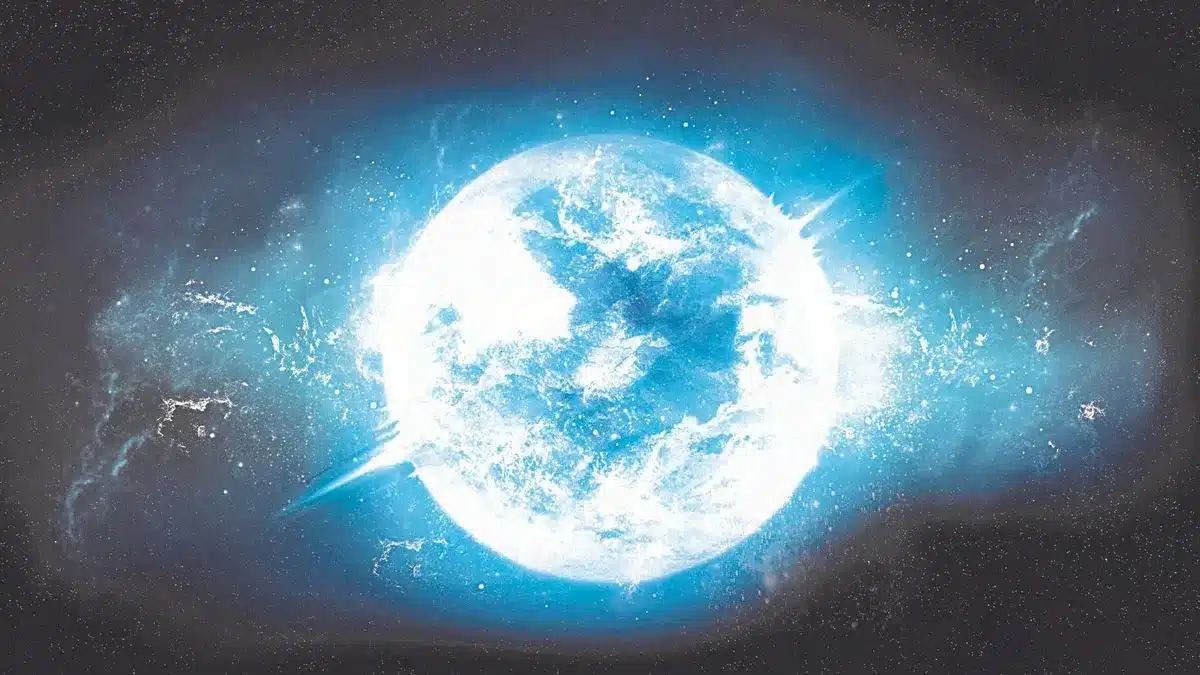About White Dwarf
- A white dwarf is the stellar core left behind after a dying star has exhausted its nuclear fuel and expelled its outer layers to form a planetary nebula.
- It is what stars like the Sun become after they have exhausted their nuclear fuel.
- White dwarfs no longer support nuclear fusion reactions that generate energy, but they are still extremely hot.
- A typical white dwarf is half as massive as the Sun, yet only slightly bigger than Earth.
- This makes white dwarfs one of the densest collections of matter, surpassed only by neutron stars.
- A newly born white dwarf consists of helium, carbon, and oxygen nuclei, swimming in a sea of highly energetic electrons.
- Unlike most other stars that are supported against their own gravitation by normal gas pressure, white dwarf stars are supported by the degeneracy pressure of the electron gas in their interior.
- Degeneracy pressure is the increased resistance exerted by electrons composing the gas, as a result of stellar contraction.
- Unless it is accreting matter from a nearby star, the white dwarf cools down over the next billion years or so.
- It is predicted that they would ultimately form ‘black dwarfs’, although the Universe is likely not old enough for any black dwarfs to exist yet.
- The luminosity of white dwarfs can therefore be used by astronomers to measure how long-ago star formation began in a particular region.
- Many nearby, young white dwarfs have been detected as sources of soft, or lower-energy, X-rays.
- By providing important ‘fossil’ records of the stars that they formed from, white dwarfs are an important cosmological tool.
- In 2006, Hubble was the first telescope to directly observe white dwarfs in globular star clusters, which astronomers reported as the dimmest stars ever seen in a globular star cluster.
Q1) What is a Neutron star?
The stars which are formed when a massive star runs out of fuel and collapses are called neutron stars. The very central region of the star – the core – collapses, crushing together every proton and electron into a neutron.
Last updated on December, 2025
→ Check out the latest UPSC Syllabus 2026 here.
→ Join Vajiram & Ravi’s Interview Guidance Programme for expert help to crack your final UPSC stage.
→ UPSC Mains Result 2025 is now out.
→ UPSC Notification 2026 is scheduled to be released on January 14, 2026.
→ UPSC Calendar 2026 is released on 15th May, 2025.
→ The UPSC Vacancy 2025 were released 1129, out of which 979 were for UPSC CSE and remaining 150 are for UPSC IFoS.
→ UPSC Prelims 2026 will be conducted on 24th May, 2026 & UPSC Mains 2026 will be conducted on 21st August 2026.
→ The UPSC Selection Process is of 3 stages-Prelims, Mains and Interview.
→ UPSC Result 2024 is released with latest UPSC Marksheet 2024. Check Now!
→ UPSC Prelims Result 2025 is out now for the CSE held on 25 May 2025.
→ UPSC Toppers List 2024 is released now. Shakti Dubey is UPSC AIR 1 2024 Topper.
→ UPSC Prelims Question Paper 2025 and Unofficial Prelims Answer Key 2025 are available now.
→ UPSC Mains Question Paper 2025 is out for Essay, GS 1, 2, 3 & GS 4.
→ UPSC Mains Indian Language Question Paper 2025 is now out.
→ UPSC Mains Optional Question Paper 2025 is now out.
→ Also check Best IAS Coaching in Delhi

















